
Northwest-coast art books clutter the basement studio where artist Jay Simeon creates jewellery, masks, sculptures and paintings in the traditional style of his people.
These kinds of books, which his father had around the house growing up, are what piqued Simeon's interest in what he calls the "visual language" of Haida art.
When he was 14, he started an apprenticeship with his aunt, a carver, and by his mid-20s was serious about making art his career.
Simeon, now 31, sells pieces for up to $12,000 in six galleries around Vancouver, and has no trouble keeping busy.
"Everything I make goes," says Simeon. "It's a matter of kicking myself in the butt to keep working."
Powerful lines
He works in gold, silver, wood, acrylic and argillite, the slate-like rock unique to traditional Haida territory on the Queen Charlotte Islands. The animals he engraves on these pieces -- eagles, ravens and orcas among them -- follow the distinct Haida form, which is anchored around the ovoid.
The ovoid, an oval shape created with lines of varying thickness, creates tension and engages the viewer, says Simeon. The lines are fluid, connecting with one shape in the image, then another, so everything is connected.
He says the dimensions of the ovoid must be precise to maintain that distinctive look.
"You can measure it... but when it comes down to it, it's more of a feeling."
It wasn't always this easy. Simeon says he was told "no" countless times from commercial gallery buyers. He learned the ropes of this business -- what galleries are looking for, how much should he charge, how should he market himself -- on the job.
A new course at Vancouver's First Nations Education Centre intends to help artists break in to the gallery scene.
Art of the entrepreneur
"What we're going for is perfection," Dan Wallace tells students in his Northwest coast jewellery arts class. Today is the deadline to finish the current project -- a pair of silver earrings and a pendant -- and this afternoon a gallery buyer will be in to check out the students' work.
There are 14 people currently enrolled in the 24-week long course, but more than 100 applied. Wallace says most are already professional artists looking to try another medium and pick up some entrepreneurial skills. The course covers technical aspects of the art, like form and metalwork, as well as skills in studio management.
"A lot of business and marketing has to come into play as well," he says.
"We need to make sure we always have enough in our own budgets so we can afford to maintain our existence."
The need to 'self-identify'
Wallace says students leave the class with a portfolio, a better of idea of how to market themselves, and hopefully, a better knowledge of their own ancestral art forms.
"It helps them come to more of a clearer understanding of what their specific culture does in practice, why they use certain things... it really helps put more of a focus on a lot more than what our art is visually, get them to look into where they come from."
The course is accredited with Emily Carr Institute, should students wish to continue studies there, but the First Nations centre is currently developing its own fine arts program.
"It's important this program be here because a lot of our own people really need to self-identify with who they are," says Wallace.
Emily Carr a gateway
Dana Claxton, a prominent Lakota Sioux film and video installation artist, says Aboriginal art is now being seen as a "bonafide" field within art history.
"I think what is really exciting about what's going on with contemporary Aboriginal art is that there's more and more grads from art school," she says.
"Aboriginal youth are realizing there is a place for them, not only within the Aboriginal art world, but in the larger Canadian art world."
Marianne Nicolson, a member of the Dzawada'enuxw tribe of the Kwakwaka'wakw nation, has been an artist for 20 years and currently teaches a First Nations drawing and painting course at Emily Carr.
Although she completed a traditional apprenticeship in Kwakwaka'wakw style with her cousin, Nicolson says her own experience as an Emily Carr student helped her gain a critical understanding of the public art gallery system.
Commercial vs. ceremonial
"If I didn't have that training, the only real option available to me would have been the commercial system," she says.
"For the most part, if you are being initiated into a traditional apprenticeship, really, the primary focus of your creativity is for commercial galleries."
Nicolson says she tries to make her students aware of the difference spheres in which Aboriginal art exists: the commercial market, public galleries and traditional ceremonies.
She says she personally draws a firm line between work she does for public spaces, and pieces she creates for ceremonial purposes.
"I tend to keep the two separate. What I create for ceremonial purposes stays in the ceremonial system," says Nicolson.
For example, she will sew traditional blankets with button detailing -- button blankets -- for her relatives, but recreates the same patterns with paint, not fabric, for display in public galleries.
Who 'owns' it?
"When I was creating works for my own family's potlatch," says Nicolson, "those works became the property of my uncle. That's a very different concept then coming out of a Western-European concept of the artist owning copyright of their work until they choose to sell it."
"The ideas around copyright are very different and I want my students to understand that."
Though she estimates that 90 per cent of Northwest-coast art is created for the commercial market, rather than ceremonial purposes, Nicolson says she believes younger artists truly recognize the value in their traditional art systems.
"I know there are young people who are very earnest and there's strong desire to integrate the old way. The big question is how."
Karen Duffek, curator of contemporary visual arts at the Museum of Anthropology, says many artists she talks to want to have their Aboriginal heritage recognized in some way, so it's clear how traditional knowledge has influenced contemporary pieces.
"They like to see their work in relation to older pieces, put alongside traditional art, rather than put on a shelf where you wouldn't know where it began or ended," she says. Duffek says one artist, Jude Norris, made a traditional buckskin doll that she wanted on display with the rest of the museum's historic Cree doll collection.
What is 'contemporary'?
Duffek says there's a notion that contemporary Aboriginal art is limited to art that incorporates mixed media, like photography or video installations.
She believes that traditional art forms created for use today are just as contemporary.
"Art being made for use by the community is not nostalgic. It's a very, very contemporary thing to do... a strengthening thing to do. The artists who are creating work to supply that kind of use need to be acknowledged in that way."
Simeon says one of his proudest moments as an artist was when he carved six bracelets in exchange for a potlatch ceremony in which he was given his Haida name.
"That felt so good, to be able to do something in the context of our culture."
'We all gotta eat'
While he takes much pride in crafting beautiful pieces for galleries, like other artists he speaks to, Simeon laments the fact that few of his pieces remains in the Haida community.
"You want to get involved and you want to do stuff for home or for your chief, but with the amount of time that goes into a piece and what you would get having it go privately.... I mean, we all gotta eat."
"I think the commercial part of it is a really big part, but at the same time, the art form, it's so connected to where we come from," he says.
"The pieces weren't just form, they were function, they were made to do something before there was a commercial market for them," he says.
Art as healer
Chandra Hellson, a student at the Alberta College of Art and Design, says she didn't grow up exposed to much traditional Blackfoot art, but was surrounded by visual artists, filmmakers and photographers. Her mother was a filmmaker and organized an Aboriginal women's film festival, Herland, every year.
"I was brought up with the notion that art is a form of healing, especially for the Aboriginal community," says Hellson.
She says she's learning about how to integrate audio, lights and video into her sculptures. She wants to do public installations, pieces that engage the viewer.
"I'm not really interested in becoming so much of a gallery artists," she says. "But I think it's important to an extent to get involved so you're economically more secure."
"Really, it's about drawing people to artwork through that human ability to recognize beauty."
Related Tyee stories:
- Aboriginal Art Turned Inside Out
Conceptual artist Brian Jungen on 'Indian crafts', Nike Town, glitz, pine beetles and more. A Tyee interview. - Exhibiting Conflicts
Whose truth gets told in today's museums? - Reconciling with First Nations
How the 'New Relationship' is faring in the Fraser Valley. - Bold Goal: 250 First Nations PhDs in Five Years
A Maori dynamo wants to radically ramp up the number of Aboriginal academics in B.C. He's done it before, in New Zealand.


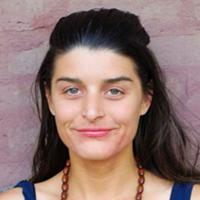









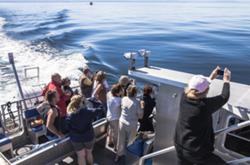
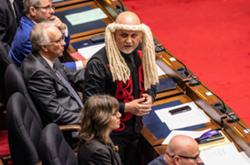
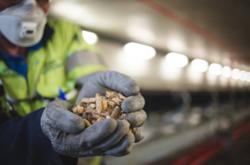
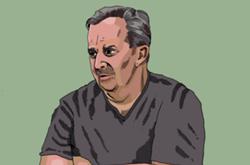
Tyee Commenting Guidelines
Comments that violate guidelines risk being deleted, and violations may result in a temporary or permanent user ban. Maintain the spirit of good conversation to stay in the discussion.
*Please note The Tyee is not a forum for spreading misinformation about COVID-19, denying its existence or minimizing its risk to public health.
Do:
Do not: